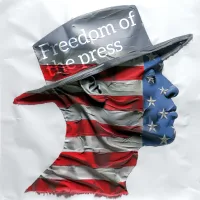This year’s Primary Elections have uniquely aroused political passions from all over the electorate spectrum. The political story of the year is how Donald Trump came from  nowhere to get crowds to his rallies and the voters to the polls. By listening to the hoopla the so-called newscasters express, you would think that he will be anointed President.
nowhere to get crowds to his rallies and the voters to the polls. By listening to the hoopla the so-called newscasters express, you would think that he will be anointed President.
It is true that Republicans have set a record of the number of voters in their primaries. Through the May 10 primaries, the GOP had 26.1 million primary voters. Their previous record was in 2008 with 20.8 million. The Democrats had 22.2 million. Their highest primary turnout was also in 2008 with 36.8 million voters.
But, as the University of Virginia Center for Politics’s Sabato’s Crystal Ball points out that since 1972, the party with the higher primary turnout won the presidency only four of the eleven elections (36%). The Democrats accomplished that in 1976, 1992, 2008; Republicans in 2000.
Real Clear Politics has the results for each of this year’s primary popular votes by party–Republicans and Democrats.
- Through the May 10 Primaries, Hillary received 1.6 million more votes than Trump, received 12.5 million to 10.9 million. Bernie had 9.4 million votes.
- Of the 35 states that had primaries for both parties, Hillary received more votes that Trump in 21 states. He had more that her in the other 14 states.
- Bernie had more votes that Trump in 16 states, and Trump had more tan Bernie in 19 states.
- Both Hillary and Bernie each had more votes that Trump in 12 primary states.
- As of May 10, Trump received 41.7% of the republican votes (10.9/26.1) and Hillary received 56.3% of the democratic vote (12.5/22.2).
Yes, you can make the argument that there are more Democrats than Republicans primary voters and that Trump had more opponents. You would be correct–but in the real world of the Electoral College getting one vote more than your opponent earns you that state’s electoral vote.
Trump’s boasting that he has brought out “millions and millions’ of new voters who will help him turn traditional blue states red in the General Election is unfounded. Politico, looking at data from state’s that have released voting data has found that new caucus goers have traditionally voted in November. Two examples:
- In Iowa 95% of the caucus voters has voted at least once in the last four presidential elections–80% in at least three of the last four.
- In Florida, a battleground state, 6% (142,000) of their primary voters did not vote in 2012 or 2014 General Election. That may sound like a lot until you realize that Florida has added more than a million voters since the 2012 election.
- The article also pointed out that Trump’s rhetoric has alienated many groups (young people, Latinos, Asian-Americans, and African-Americans), and they will vote against him.
The data gives us a fuzzy picture of this year’s primaries. In our democracy, each state creates their election procedures–the rules that they will follow to elect the President. New York had closed elections–only Democrats decide who they want to nominate to be President, or, only Republicans will be able to decide who will represent them on the ballot. Voters can not change their party within six months before the general election. Other states, like Virginia for example, will let voters decide which ballot, Republican or Democratic, you will use right before you vote. We will never know how many Republicans voted for Bernie because they don’t want to run against Hillary in November.
In New York State barely a third (34.1%) of the registered voters bothered to vote in the primary. The NY 23rd had a sightly higher turnout rate (38%). Both parties are working to get their battle plans drawn and their supporters ready motivate like thinkers to exercise their power to chose their leaders. The real race will begin soon. Hold on.

